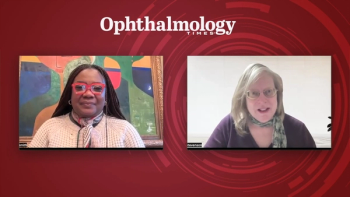
Aptamers provide new avenues for ophthalmic therapies
Aptamers are a new class of molecules, like antibodies in small molecules, that provide distinct advantages for new therapies in ophthalmology.
Aptamers are a new class of molecules, like antibodies in small molecules, that provide distinct advantages for new therapies in ophthalmology.
First, researchers have found that aptamers are well tolerated in the eye. In the pegaptanib sodium studies, Eyetech didn't have a single incident of severe inflammation associated with the drug. The company said that any inflammation reported was attributable to the actual intravitreal injection procedure itself.
Second, aptamers allow researchers to target a single form of vascular endothelial growth factor (VEGF) specifically. Classified as a second-generation VEGF inhibitor, the aptamer used in pegaptanib sodium blocks just the 165 isoform, which is the main one that is made in disease.
If all VEGF is blocked, a number of toxic side effects have been identified, both systemically and in experimental models in the eye. Those toxic side effects are not seen when only the 165 isoform is blocked.
"It stands to reason that blocking 165 (isoform) would have a safety advantage because all normal eyes make VEGF," explained Anthony Adamis, MD, chief scientific officer and senior vice president of research. "Then you have to ask, 'why is it there? is it a good idea to block it all?' And our answer is that some of that VEGF is there to serve normal functions in the eye. Blocking it all seems to have some toxic effects; blocking the 165 (isoform) seems to block the pathology in a very targeted way."
A third advantage of aptamers, just in general, is that they can be generated very rapidly and very specifically.
"The beauty of aptamers is that unlike other drugs, they can be made relatively quickly because it happens in the test tube, and from the start, 2 weeks later you already have a lead aptamer," Dr. Adamis explained. "It's a very powerful technology that people are just starting to understand because Macugen is the prototype."
Newsletter
Don’t miss out—get Ophthalmology Times updates on the latest clinical advancements and expert interviews, straight to your inbox.













































